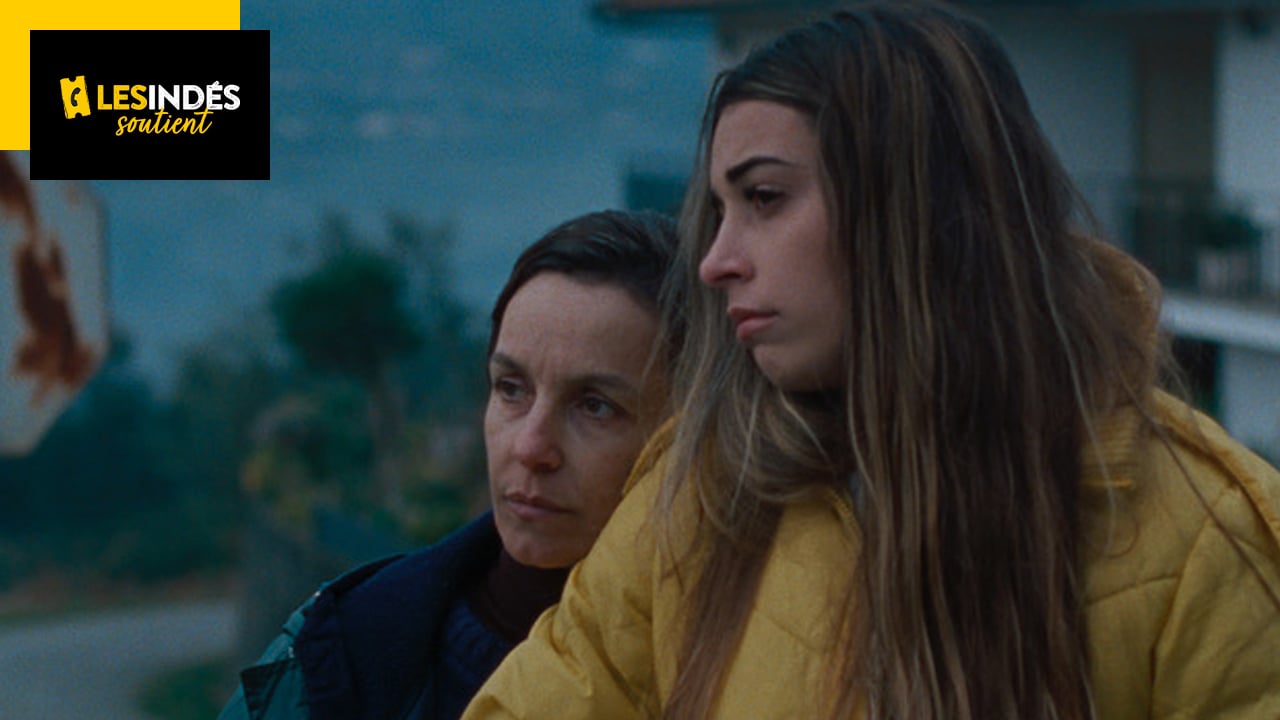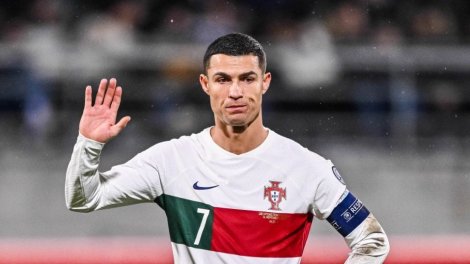
It’s an animated movie with stylish graphics, shimmering colors, and magical poetry. A film in which Portuguese director José Miguel Ribeiro tells the tragic story of three generations of women during the Angolan Civil War, but also during the last years of the regime of the late President José Eduardo dos Santos.
Tragic story
“I don’t think your parents are alive. The war ended exactly eight years and twelve days ago. They had plenty of time to find their way home.” In these terms, Lilina responds during a dinner to the frequently asked question about her granddaughter Yara, who keeps asking her if her parents are coming home. Sixteen-year-old Yara never really knew her parents. Her mother, Nayola, went to war when she was only two years old. Rahil is motivated by the disappearance of her husband, Ikombi, in her fight, in whose footsteps she embarks, hoping to find him alive.
(Re) See: Nayola’s movie trailer
This film, based on a play called “A caixa preta” by excellent Angolan writers José Eduardo Agualusa and Mia Cotto, begins shortly before the end of the civil war and during the final years of the late Eduardo dos Santos regime. Between 1575 and 1975, Angola was already a Portuguese colony, which in particular would be one of the strongholds of the transatlantic slave trade.
In the 1960s and 1970s, the independence movement developed in the country. Thanks to the Carnation Revolution (which upset Portugal in April 1974 and ended the dictatorship) Angola gained independence in 1975. Since then, the MPLA, with communist allegiance (supported by the former USSR), has taken power Its leader, Agostino Neto, became the first president of the republic.
Stark disparities
Unfortunately, ongoing divisions and conflicts with other independence movements, particularly UNITA, and the National Union for the Total Independence of Angola led by the late Jonas Savimbi (with South African support in particular), precipitated the country into chaos and civil war.
In 2002, just a few weeks after the death of Jonas Savimbi, the historical leader of UNITA, who was killed by the Angolan army after a long manhunt, a ceasefire agreement was signed by the leaders of the Angolan army and the UNITA rebellion. The cease-fire that ended 27 years of civil war that left 500,000 dead and 4 million refugees.
Coming to power after the death of Agostinho Neto in 1979, Jose Eduardo dos Santos led the country without interruption until his voluntary departure in 2017 – he died on July 8, 2022 in Barcelona, Spain. Despite the relative stability that has been restored after the ceasefire agreement, Angola will remain one of the least democratic countries on the continent, with a rather unstable economic situation, especially with regard to the distribution of wealth. Angola is the third largest oil exporter on the African continent.
Now led by Joao Lourenco, former defense minister of dos Santos, Angola, with a population of just over 25 million, is the sixth largest economy in sub-Saharan Africa. However, according to the World Bank, in this country that is the second largest oil producer in sub-Saharan Africa, a third of the population lives on less than $ 2 a day, and the unemployment rate reached more than 30% at the end of the first quarter of 2022.
TV5MONDE: How did the idea for this film, an adaptation of the play “A caixa preta” by Angolan writers José Eduardo Agualusa and Mia Couto, come about?
Jose Miguel Ribeiro: The idea was born from the strength and originality of the play written by José Eduardo Agualosa and Mia Cotto, and that of Jorge Antonio, a friend who lives in Luanda [la capitale angolaise, NDLR] For thirty years, she let me get acquainted during my first trip to Angola, in 2008. In this play, a shadowy figure returned from the war in a jackal mask enters through the window of a house where her grandmother and her granddaughter have lived since the end of the war. This masked man ends up sitting at the kitchen table, eating soup while talking about the war and their shared past with Grandma.
TV5MONDE: The film focuses on two distinct episodes in contemporary Angolan history: the civil war and the final years of the late President Eduardo dos Santos’ regime. Is it compatible with the play or is it more of an addition on your part?
Jose Miguel Ribeiro: The play takes place during the first years after the war [après 2002 et la signature d’un accord de cessez-le-feu, NDLR]. I took it as a rule, and added episodes to it just before the end of the war, in order for the spectators to embark on a journey to Angola, so that they might know the truth about this war. A war that continues to divide families, recruit a large part of the youth and has affected the entire Angolan society. Everything is completely faithful to the play.
What I actually changed was that I created a little girl, Yara, different from the one in the play. In the play, Yara is a young rebel. I was moved by an event that took place in 2015: the arrest of Angolan rapper Luati Birao and about fifteen youth activists, accused of plotting a rebellion against President Jose Eduardo dos Santos, and his sentencing to a farm [des peines allant de deux à huit ans]. Then Loati Berao started a hunger strike, which I accompanied when I was developing the project.
And I said to myself that the rap movement in Angola is very important, has an ambition to change society, and that I had to find a rapper to play Yara. This is how I discovered on YouTube the Angolan rapper Medusa who gave her voice to the young Yara who plays in the movie. For me, it was important not only to talk about the past, but also to talk about the future. In the film, the part that evokes the present speaks of a country under construction, a country affected by centuries of Portuguese colonialism, thirteen years of liberation war, and nearly thirty years of civil war.
I wanted to leave hope in the film, the energy of the Angolan youth engaged in changing the country, a new country, more democratic and just. That is why I wanted to tell not only about the war, but also about the present, about what is happening now. I just spent a week in Angola. We showed the film in Luanda, in Benguela [dans le centre-ouest du pays, NDLR] and in Lubango [dans le sud-ouest du pays, NDLR]And all the viewers reacted very well to the movie. They felt it was an Angolan film in the sense that it represented an Angolan point of view. I didn’t want the movie to end on a pessimistic note.
TV5MONDE: The film focuses on three generations of women. Is it a desire to evoke their place in Angola’s contemporary history, because they are so often forgotten?
Jose Miguel Ribeiro: All three generations of women were already present in the play. And I think that’s exactly the case. I realized the importance of their role thanks to all the readings I did, especially Margarida Paredes’s Angolan book “Combater duas vezes” (“Fight Twice”, in French), in which she spoke of the participation of women in the war of liberation against the Portuguese, but also in the civil war where they were also very present.
Therefore, women have always occupied a central place in the construction of Angola.
Jose Miguel Ribeiro, Filmmaker
Therefore, women have always occupied a central place in the construction of Angola. Today, if we look at the Angolan parliament, women represent nearly 40% of the members of parliament. What is not given. It is an invasion of Angolan women who have fought and found their place in the Angolan political space. And when I realized this fact, I said to myself: I must be able to get out of my position as a European to see Angola from the Angolans’ point of view.
It’s a movie that took nine years to make. I worked a lot, and read a lot of African and Angolan authors, just to be able to put myself in their shoes. Same for movie music, Bonga music for example. Music that has great importance in the history of Angola. Music is a very important part of Angolan culture. So I took the opportunity to introduce her on film, to accompany this journey.
TV5MONDE: Specifically, the music is almost a character in its own right in the movie. Why did you give him such a place?
Jose Miguel Ribeiro: Music can be seen as a reflection of society politically, economically and socially. Angolan music is very rich with famous artists like bunga. But there are others like the late David Z, rapper Medusa… There are musical genres born in Angola like Kuduru [danse et genre musical né dans les années 1990 et inspiré de break dance, d’electro ou encore de percussions traditionnelles, NDLR].
So I couldn’t talk about Angola without talking about the music. What I tried to do is also take the viewer on a historical musical journey. Artists like Bonga, who made the music we hear at the end of the film that was recorded in the Netherlands, when Bonga came to Europe to flee the Portuguese fascist regime, it is the music that tells the tragedy of a mother who must leave and who will die leaving her daughter behind.
This nostalgia found in the music is a picture of Angola during the years of war against the Portuguese colonialists. So I tried to use music as an integral part of the country’s history. So music plays a very important role in being able to transport us to Angola. I would like to point out that a large part of the music is sung in Angolan languages. Because there is a great linguistic wealth in Angola.
TV5MONDE: You evoke a tragic reality with bright, vivid colours, graphics in which masks are especially visible. Why such choices?
Jose Miguel Ribeiro: What I learned from this movie is that life does not end with war. Which means that nature remains fertile, animals continue to live, people still dance, marry and have children … The more the population plunges into the darkness of war, the more light they need to continue life. When I bring these colors, this beauty inspired by nature, it is because I want to show the viewer the contrast between beauty and horror, poetry and slaughter. This applies to all wars. So I couldn’t make a movie that was just dark, that wouldn’t have reflected reality. I still want to be close to that inspiration for reality.
I used the beauty of plastic arts, colors and textures to illuminate this film.
Jose Miguel Ribeiro, Filmmaker
For African masks, I’ve always worked with masks. I remember that they influenced great European artists like Picasso or Modigliani. I am part of that line of artists who learn from and are inspired by this ability of African sculpture, for example, to represent faces with great simplicity but also with great expression and intensity. So I couldn’t make a movie set in Africa without resorting to masks. I used the beauty of plastic arts, colors and textures to illuminate this film. Because in my opinion it is a shining film, because there is always hope in human beings.






